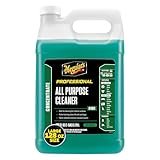Harley Davidson Torque Specifications: Ultimate Guide
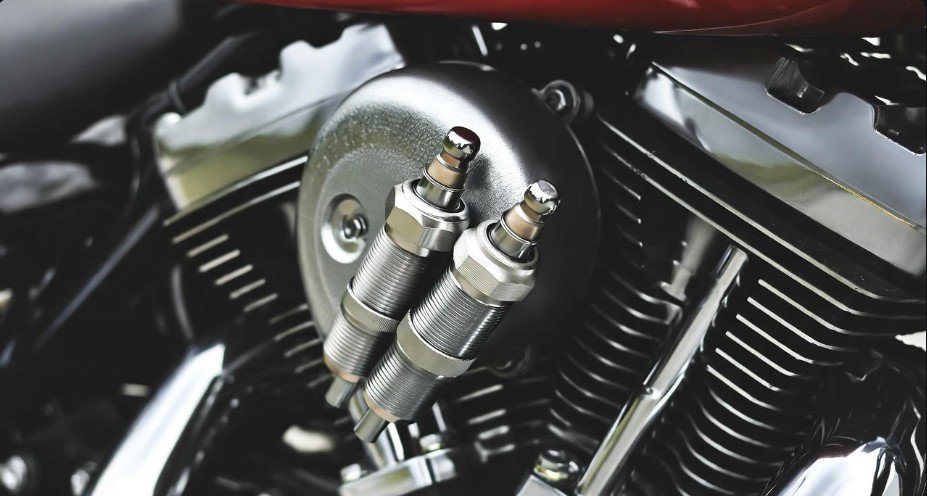
If you’ve ever tightened a bolt on your Harley and wondered, “Is that tight enough?”—you’re not alone. Many riders overlook one of the most crucial aspects of motorcycle maintenance: torque specifications. Think of torque as the handshake between your tools and your Harley Davidson. Too weak, and things fall apart. Too strong, and something breaks. The sweet spot—the correct torque—is where safety, performance, and longevity live in harmony.
Every Harley Davidson motorcycle is built with precision engineering. But even the most powerful V-twin engine relies on perfectly torqued bolts to stay strong and balanced. Whether it’s your engine mounts, brake calipers, or axle nuts, every component has a specific torque requirement that keeps your ride safe and responsive.
In this guide, we’ll take you deep into the world of Harley Davidson torque specifications—what they mean, why they matter, and how to apply them like a pro. We’ll explore torque fundamentals, common mistakes, expert tips, and even the emotional satisfaction that comes from knowing your Harley is road-ready down to the last bolt.
The True Meaning of Torque in a Harley Davidson
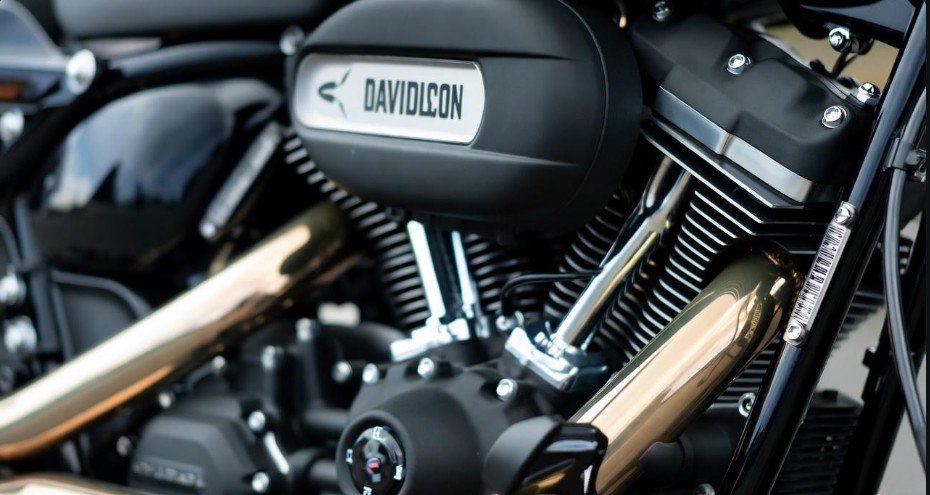
When you hear the word torque, it’s easy to imagine brute strength. But in the motorcycle world, torque is all about controlled power. It’s the twisting force that makes your Harley surge forward when you twist the throttle. And when we talk about torque specifications, we’re referring to how tightly parts of your bike should be fastened together.
Imagine your Harley’s engine as a living organism. Every bolt is a muscle fiber. Tighten it too much, and you strain the muscle. Leave it too loose, and it can tear. The correct torque keeps everything moving in perfect rhythm. That’s why Harley Davidson torque specs are so vital—they preserve that delicate mechanical balance that gives your bike its signature roar and reliability.
Here’s why torque is the unsung hero of your Harley:
-
It ensures that bolts hold steady under vibration.
-
It prevents engine leaks, brake failures, and wheel wobble.
-
It extends the lifespan of parts by maintaining even stress.
In short, correct torque isn’t just a technical requirement—it’s an act of respect for your Harley.
Torque vs. Horsepower: The Dynamic Duo Explained
Let’s clear up one of the most common confusions among riders—torque and horsepower. Both are vital, but they tell different stories about your bike’s performance.
| Feature | Torque | Horsepower |
|---|---|---|
| What It Measures | Rotational force | Work done over time |
| Impact | Affects acceleration and pull | Affects top speed |
| Feeling | Felt during low-speed riding | Felt during high-speed cruising |
| Harley Focus | Prioritizes torque for control | Balanced for performance |
Torque is what you feel when your Harley pulls hard at a stoplight or climbs a steep hill without hesitation. It’s that deep, satisfying push that Harley riders love. Horsepower, on the other hand, is what keeps you cruising effortlessly at highway speeds.
Harley Davidson engineers have long prioritized torque over peak horsepower because torque delivers that iconic low-end rumble and muscular pull. It’s what gives every Harley its soul. When you understand torque, you understand what makes your Harley feel alive.
Harley Davidson’s Legacy of Precision and Power
For over a century, Harley Davidson has stood as a symbol of freedom, strength, and craftsmanship. But behind that legacy is something simple and technical—torque control.
From its humble beginnings in a small Milwaukee shed in 1903 to its global dominance today, Harley’s success rests on a foundation of engineering precision. Every model—from the nimble Sportster to the road-commanding Touring series—has unique torque specifications designed for optimal performance.
Harley’s design philosophy is built around three core principles:
-
Balance – Equal torque across all fasteners ensures smooth operation.
-
Durability – Correct torque prevents premature wear and tear.
-
Performance – Proper torque settings translate to consistent engine behavior.
This is why every Harley feels solid, responsive, and alive under your hands. The symphony of torque within each bike keeps it performing like new, mile after mile.
Understanding Harley Davidson Torque Specifications
Let’s get practical. Torque specifications are simply the manufacturer’s recommended levels of tightness for each fastener on your bike. They’re expressed in foot-pounds (ft-lbs) or Newton-meters (Nm) and determine how much twisting force you apply with a torque wrench.
But why does this matter so much? Because torque is about precision, not guesswork. When bolts are under-torqued, they can loosen and cause rattles or worse—catastrophic failures. Over-torquing can strip threads, deform components, or crack the casing.
Here’s a quick look at what proper torque does:
-
Keeps components aligned and secure.
-
Reduces wear caused by vibration.
-
Prevents leaks in gaskets and seals.
-
Ensures smoother handling and braking.
When Harley engineers specify a torque range—say 55 ft-lbs for an axle nut—it’s not just a suggestion. It’s the result of extensive testing to find that perfect point where strength meets flexibility. Ignoring these specs is like playing a guitar with one string too tight—it ruins the harmony.
Key Components That Rely on Proper Torque
Every part of your Harley has its own torque story. Some components, like the engine mounts and axle nuts, are under constant stress. Others, like handlebar clamps or seat bolts, affect comfort and stability. Knowing their torque specifications ensures you maintain both safety and performance.
Here’s a simplified look at how different parts play their role:
-
Engine Bolts: Keep the powerhouse of your Harley secure. Incorrect torque here can lead to vibration and misalignment.
-
Brake Caliper Bolts: Affect braking reliability. Under-torqued bolts can cause brake fade or rotor warping.
-
Wheel Axles: Maintain wheel alignment. Over-tightening can crush bearings, while loose torque risks wheel wobble.
-
Handlebars and Controls: Influence steering precision and rider comfort.
-
Frame Bolts: Keep the entire chassis rigid and responsive under load.
Each bolt, nut, and screw carries its share of the bike’s weight and stress. That’s why seasoned Harley owners often keep a torque chart or a digital manual handy for regular maintenance.
The Tools You Need for Perfect Torque
A craftsman is only as good as their tools—and in the world of Harley maintenance, the torque wrench is king. This tool ensures every bolt is tightened to the manufacturer’s exact specification. There are three main types of torque wrenches used for Harley Davidson maintenance:
-
Click-Type Torque Wrench – Emits a “click” sound when the desired torque is reached. Perfect for most tasks and easy to use.
-
Beam-Type Torque Wrench – Uses a visual scale to show applied torque. Ideal for those who prefer manual control.
-
Digital Torque Wrench – Provides precise readings on a digital screen and sometimes logs data. Best for professionals.
Maintenance Tips for Your Torque Tools
To ensure accuracy, follow these quick tips:
-
Calibrate regularly: At least once every six months.
-
Clean after each use: Dirt and oil can affect readings.
-
Store properly: Keep in a dry, cool place to prevent rust.
These tools may seem simple, but they are your connection to the Harley’s engineering soul. Treat them well, and they’ll keep your bike safe and strong.
Common Torque Mistakes (And How to Avoid Them)
Even the most experienced riders make torque mistakes. The difference between a confident DIY mechanic and a frustrated one often comes down to attention to detail.
1. Over-Tightening:
This is the most common mistake. Many assume “tighter is better,” but that’s not true. Over-torquing can strip threads or warp delicate parts like the brake rotor. Always trust your torque wrench, not your instincts.
2. Under-Tightening:
This is equally dangerous. A bolt that’s too loose can cause rattling, leaks, or even component failure mid-ride. Imagine a brake caliper coming loose at 70 mph—not a pleasant thought.
3. Ignoring Manufacturer Specs:
Each Harley Davidson model has its unique torque chart. Using the wrong values, even by a small margin, can cause imbalances that lead to costly repairs.
4. Not Calibrating Tools:
Torque wrenches lose accuracy over time. Using an uncalibrated wrench is like guessing torque by feel—it defeats the purpose.
In short, precision is power. If you respect your torque specs, your Harley will reward you with smooth, safe, and reliable performance.
Torque Specifications for Popular Harley Models
While every Harley Davidson has its unique torque settings, here’s an overview of what you can expect across some popular models. These figures are for educational reference—always double-check your owner’s manual for exact values.
| Model | Component | Torque (ft-lbs) |
|---|---|---|
| Sportster | Front Axle | 50–55 |
| Softail | Rear Axle | 90–95 |
| Touring | Handlebar Clamp | 18–22 |
| Dyna | Engine Mounts | 40–45 |
Each of these settings ensures that your bike components are perfectly balanced under real-world riding conditions. Whether you’re cruising the coast or roaring through city streets, maintaining these torque levels gives your Harley the strength it deserves.
Upgrades and Modifications: Torque in the Real World
Every Harley owner knows the urge to personalize their ride. Whether it’s a new exhaust, performance suspension, or chrome footpegs, upgrades are part of the Harley lifestyle. But here’s where many riders make a mistake — they forget that torque specifications still apply, even with aftermarket parts.
When you install a new part, the torque requirements may differ from stock values. Aftermarket manufacturers often use different materials, which can expand, contract, or resist differently under stress. For example, a lightweight aluminum handlebar clamp may require less torque than a steel one. Ignoring this can strip the threads or warp the part.
A few smart tips before you dive into upgrades:
-
Always check the part manufacturer’s torque guide.
-
Re-torque new parts after your first few rides. Vibrations can loosen them.
-
Avoid mixing torque specs. Don’t assume all bolts on a part have the same rating.
-
Use thread locker sparingly. A drop can secure bolts, but too much can skew torque readings.
In essence, upgrades make your Harley yours, but only proper torque ensures those upgrades stay on the bike instead of on the road behind you.
Adjusting Torque for Performance and Safety
Tuning torque isn’t just about maintenance — it’s about performance. Harley Davidson motorcycles are built to handle different riding styles, from calm cruising to aggressive touring. Fine-tuning torque can make your bike respond better, feel smoother, and even handle differently.
For instance, tightening your engine mount bolts to the higher end of their spec range can reduce vibration at high speed. Meanwhile, slightly adjusting handlebar clamp torque can improve steering precision. The key is to stay within the manufacturer’s tolerance range.
Here’s how to do it safely:
-
Start with your manual’s mid-range torque value.
-
Ride and observe. If you notice vibration, adjust slightly within the safe range.
-
Never exceed the torque limit. Even a few ft-lbs too much can cause damage.
-
Use consistent tools. A quality torque wrench gives consistent results every time.
It’s not about tightening everything to the maximum — it’s about balance. Torque management is like tuning a guitar: every string (or bolt) must hit its note for the whole machine to sing.
Safety and Compliance: The Unseen Power of Torque
When you think of motorcycle safety, you might picture helmets, gloves, or lights — but torque? Probably not. Yet, correct torque specifications are one of the most important safety measures you can take.
Loose bolts on brakes, wheels, or engine mounts can lead to catastrophic failures. Over-tightened bolts can snap under stress. Both scenarios risk your life. Following Harley Davidson torque specs isn’t just a matter of performance; it’s about protection.
Moreover, Harley Davidson’s warranty and service policies often rely on compliance with official specs. If a component fails because it was improperly torqued, your warranty could be void. For riders who like doing their own maintenance, this makes torque accuracy essential — it keeps your rights intact and your wallet safe.
In short:
-
Proper torque ensures every ride is safe and controlled.
-
It protects your warranty and resale value.
-
It reflects true mechanical responsibility — the mark of a real rider.
Owning a Harley means freedom, but it also means accountability. Torque is part of that unspoken contract between you and your machine.
The Role of Torque in Harley’s Longevity
A Harley Davidson isn’t just a bike—it’s an heirloom. Many Harleys outlast their riders, passed down through generations like a prized family relic. What keeps them running that long? Proper maintenance, and at the heart of it, torque management.
Every time you torque a bolt correctly, you’re preserving the bike’s structural integrity. You’re reducing wear on components and maintaining alignment between moving parts. Over time, this adds years to your Harley’s life.
Here’s a simple truth: bikes that are regularly checked and re-torqued ride smoother and age slower. Neglecting torque, however, leads to loosened joints, cracked mounts, and vibration-induced fatigue — small issues that snowball into big repairs.
So, if you want your Harley to sound as strong twenty years from now as it does today, remember this: torque is the thread that ties your bike’s past, present, and future together.
Expert Tips for Torque Management
Ask any experienced Harley mechanic, and they’ll tell you—torque is more art than science. The tools and numbers matter, but so does your feel, your rhythm, and your consistency. Here are some professional tips to keep your torque game strong:
-
Warm up before tightening. Metal expands slightly when warm. Torqueing cold parts that heat up later can alter tension.
-
Follow the tightening sequence. For multi-bolt assemblies like cylinder heads, always tighten in the pattern specified in your manual.
-
Torque in stages. Gradually increase to your final value instead of tightening all at once.
-
Check after 100 miles. Especially after major repairs or installations—vibration can shift fasteners.
-
Invest in a digital torque wrench. It’s more precise and easier to read than analog types.
And one insider secret? Don’t rush. Torqueing is about patience. Take your time, breathe, and let each click of the wrench remind you why precision matters. It’s one of the quiet pleasures of owning a Harley.
Real-World Scenario: The Cost of Ignoring Torque
Let’s get real. Imagine you’ve just finished replacing your Harley’s front wheel bearings. You tighten the axle nut “by feel,” confident that it’s snug enough. On your next ride, you hit 70 mph on the highway. A faint vibration creeps in. You ignore it—until your front wheel starts wobbling.
That’s the cost of skipping torque specs. A single overlooked bolt can turn into a $1,500 repair—or worse, a crash.
Every Harley mechanic has a story like this. It’s not to scare you—it’s to remind you that your torque wrench is as essential as your helmet. It’s the unseen guardian of every journey.
Harley Davidson Torque Specifications: Beyond the Numbers
When you read through Harley Davidson torque specifications, it’s easy to get lost in numbers—40 ft-lbs here, 120 Nm there. But behind each figure lies a philosophy: engineered harmony.
Torque specifications aren’t arbitrary. They’re born from thousands of hours of engineering tests, ensuring each component can handle vibration, heat, and road stress perfectly. Every spec has a reason.
So, when you follow them, you’re not just tightening bolts—you’re honoring the collective wisdom of Harley’s engineers, riders, and mechanics who came before you. You’re participating in a tradition of craftsmanship that’s been refined for over a century.
Frequently Asked Questions (FAQs)
1. Why are torque specifications so important for Harley Davidson motorcycles?
Because they ensure every part is tightened just right—neither too loose nor too tight. This keeps your bike safe, durable, and performing as designed.
2. How often should I check the torque on my Harley?
It’s smart to check critical components (like wheels, brakes, and engine mounts) every 3,000–5,000 miles or during oil changes. After major work, recheck torque after 100 miles.
3. Can I over-torque a bolt if I use a torque wrench?
Yes, if your torque wrench isn’t calibrated correctly or if you set the wrong value. Always double-check settings and calibration.
4. What happens if I under-torque bolts?
Under-torqued bolts can loosen, vibrate, or cause parts to detach. It leads to instability and, in severe cases, accidents.
5. Do aftermarket parts require different torque specs?
Absolutely. Always follow the torque instructions provided by the aftermarket manufacturer. Materials and thread types can differ from OEM parts.
6. Should I use lubricants or thread lockers when torquing?
Only if specified. Some bolts require a dry fit, while others need a light coat of lubricant or Loctite. Check your manual first.
7. Is it necessary to buy an expensive torque wrench?
Not necessarily, but accuracy is non-negotiable. A mid-range click-type or digital torque wrench, properly calibrated, will do the job perfectly.
8. What’s the most common torque mistake Harley owners make?
Over-tightening by hand without using a torque wrench. Guessing torque often leads to stripped threads or warped components.
Conclusion: The Silent Strength Behind Every Harley
Every Harley Davidson tells a story—a story of freedom, craftsmanship, and raw power. But behind that story lies something invisible: the meticulous application of torque specifications.
Torque is the heartbeat of your motorcycle’s structure. It holds your engine together, keeps your wheels aligned, and ensures that every mile feels just as thrilling as the first. It’s the difference between a Harley that merely runs and one that roars with precision.
By understanding and respecting Harley Davidson torque specifications, you become more than just a rider—you become part of a century-old legacy of mechanical excellence. Each twist of your wrench isn’t just maintenance; it’s an act of devotion to the machine that defines the open road.
So next time you tighten a bolt on your Harley, pause for a second. Feel the click of the wrench. That’s not just torque—it’s trust, precision, and power working in perfect unison.

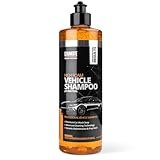

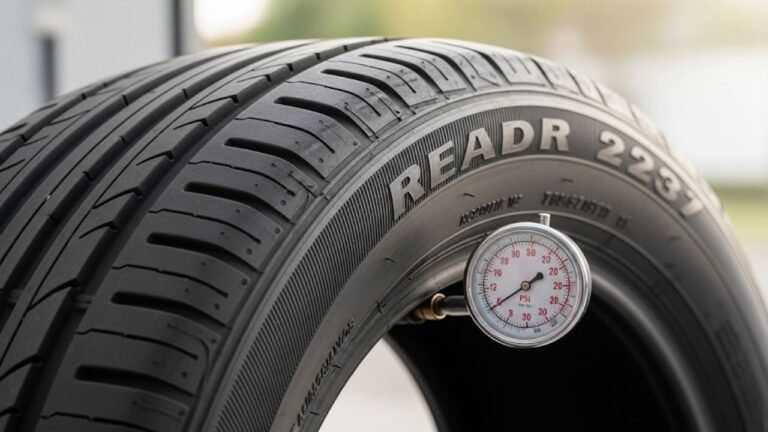
![Window Tint Laws by State [Updated 2026] 7 Window Tint Laws by State [Updated 2026]](https://aautomotives.com/wp-content/uploads/2025/10/Window-Tint-Laws-by-State-Updated-2026-768x408.jpg)
